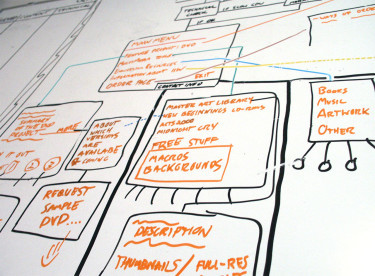How to brief a web designer/developer
Have you ever worked with a Web designer or developer and felt that you’re not on the same page? That he doesn’t understand the goals of your organization? That you’re not speaking the same language? As a nonprofit marketer, your website is one of your most valuable communication tools. Here’s how to get organized to brief a Web professional so that your next project gets off on the right foot.
Describe your organization
One of the first steps should be introducing your organization. Who are you? What do you do? How many employees do you have? Who are your competitors? Try to avoid using lofty marketing-speak or mission statements here. You’re not crafting a billboard ad; you’re simply familiarizing potential contractors with your organization. This step also helps the designer or developer to decide whether he or she is the right fit for the role.
Describe your project
Explain the nature of your project. What is driving it? Is it a component of a larger marketing campaign? Is it a lead-up to a conference or other event? Is it an overhaul of your main website? If this is a rebuild of an existing site, be sure to include any aspects of your current site that you are particularly dissatisfied with.
Budget
Budget is always a sensitive area for nonprofit organizations. There is sometimes a fear that stating how much you expect to pay will prompt the Web professional to charge that much simply because he knows you can afford it. Including a budget is essential for a number of reasons, however:
1. It ensures that you won’t get proposals from designers/developers who are out of your price range. If Dave can deliver your project but wants to charge twice your budget to do it, it’s probably a waste of time pursuing Dave as a prospect. If that’s the case, it’s best to learn it as early in the process as possible.
2. Including a budget helps the Web professional to determine how much time he can devote to your project. The more funding you’re able to put into your website, the more streamlined and feature-rich it can become. A good developer can also help determine whether your project scope can realistically be accomplished within your budget, and where you might be able to enhance and refine it.
Timelines
Timelines are one of the biggest unknowns in most Web projects. At the outset, stating when you expect the site to be launched may be sufficient, but be prepared to get much more granular with schedules. How much time will the project leads be able to commit during development? Will this project be their only focus, or just one of many work responsibilities? To minimize unwelcome surprises, it’s important that Web projects have sign-off requirements and plenty of back-and-forth reviewing between the client and the Web professional throughout development, so a thorough timeline illustrating just how much time the relevant staff is able to commit is crucial for an efficient workflow.
Target audience
Who is your target audience for this site? What do you imagine people using your site for? What will they want to do there? This should drive everything from the design to the tone of language used throughout the site.
Objectives
How would you measure the success of the site once it’s launched? More sales, donations, or volunteers? More website visits? More awareness of your cause? A good designer/developer will want to ensure that these goals are met and the project is deemed a success, so make sure that these objectives are clear to you before beginning.
Outline your technical requirements
Are you looking for a design or build or both? Be clear about exactly what work you’re looking to have done.
Content
Do you have existing content for the site or is that yet to be developed? Content entry is often the most time-consuming part of a Web project, so be sure to state whether populating your site with content is something you expect the developer to help with.
Content Managers
How many people will be updating the Web content regularly and how proficient are they at managing a website? This will guide the development process: the less tech-savvy your content managers are, the more error-proof your developer will need to make the content management side of the website, which can add to the timeline and budget.
Feature Requirements
Does your site require any special features? Membership functionality (should your visitors have access to member-specific content with a username and password)? Ecommerce (will you be selling things online)? Avoid asking for Web-related buzzwords that you’ve heard of but aren’t familiar with. If you don’t know that you need Flash, Ajax, and an Android app, don’t ask for them! On the flip side, if there’s something you want your site to do but aren’t sure if it’s possible, now is the time to ask.
The beauty of the Web is its flexibility. Your website can present your organization or cause in many different ways, so efficient communication between you and your Web designer/developer is essential for a successful project. When seeking a supplier to develop your website, document your requests and requirements early on – It will save you time, get you organized, and help you to achieve the results you’re looking for.



 PRINT
PRINT